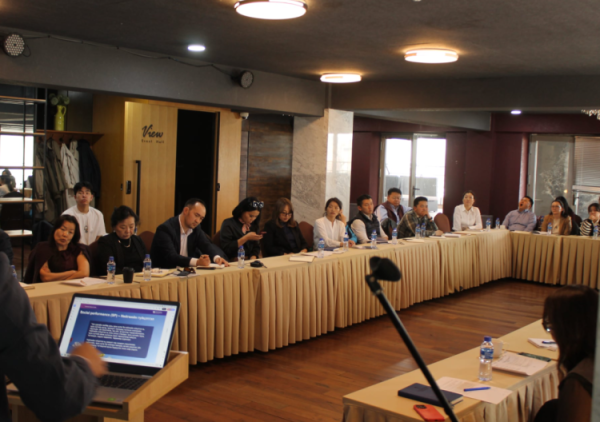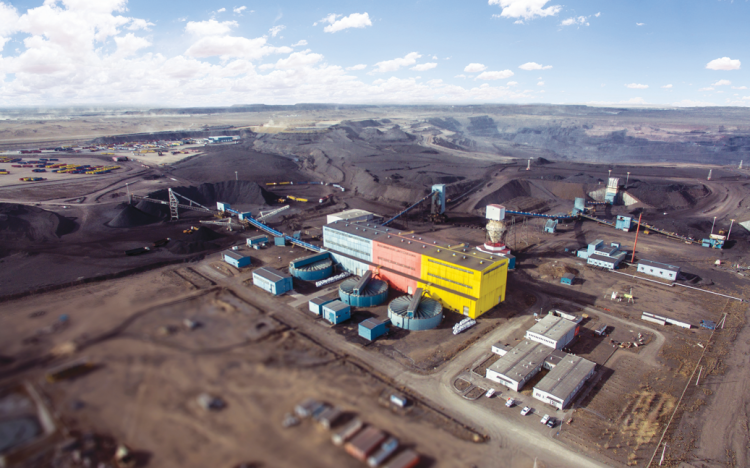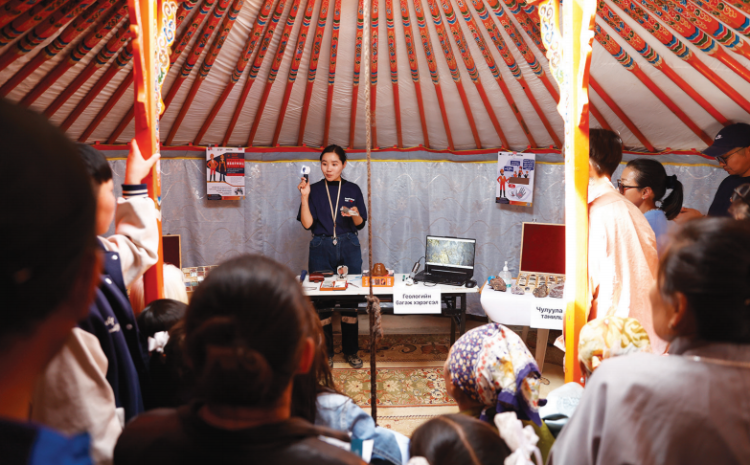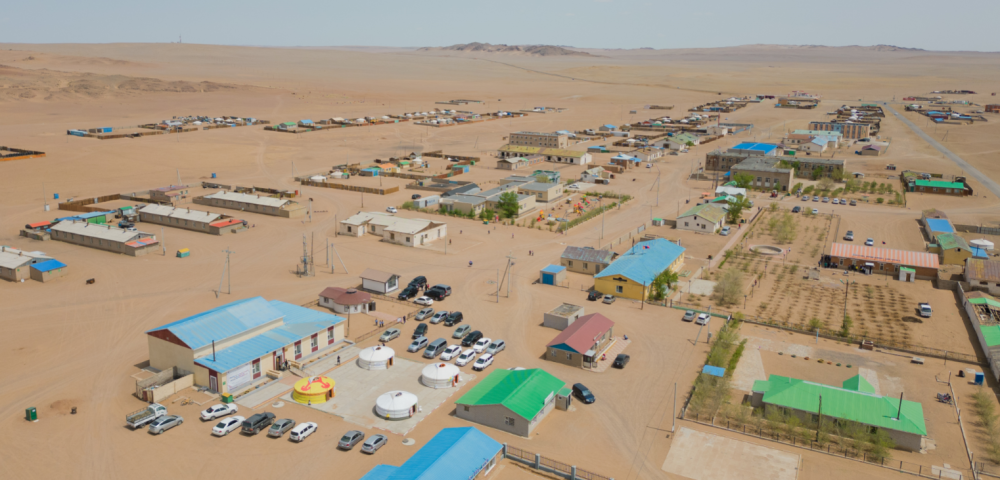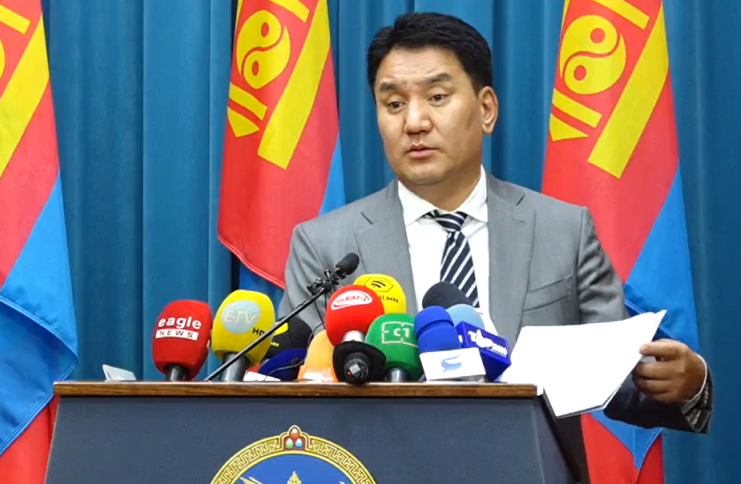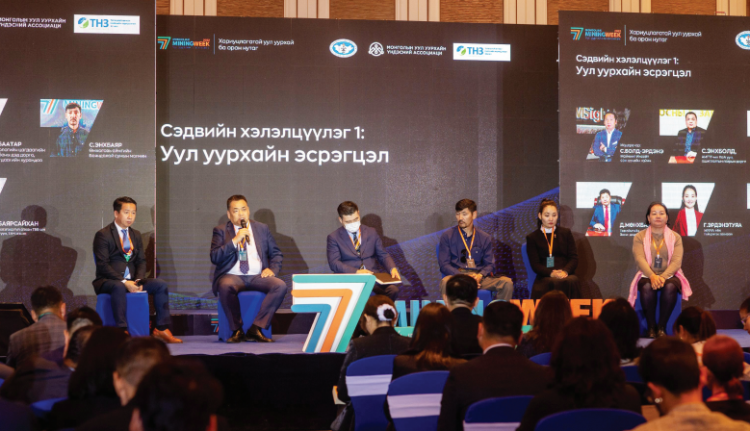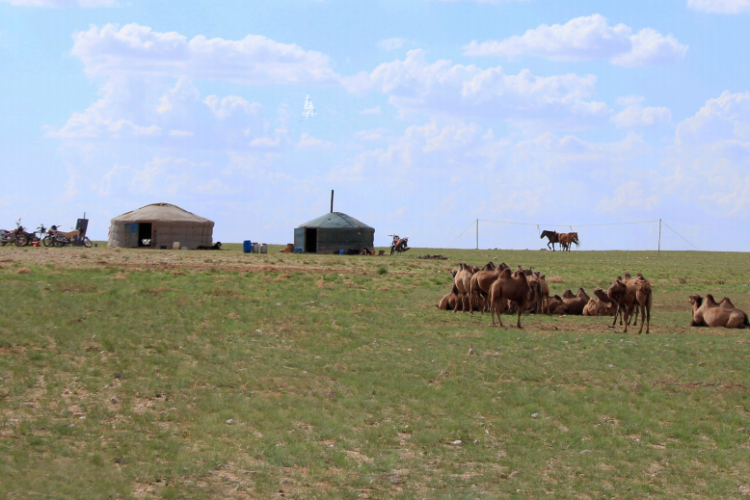 ARIUNTUYA.N
ARIUNTUYA.Nariun@mininginsight.mn
Miners and the mining industry as a whole should be seeking social licenses
Seasons changed to winter and to spring since the Minister of Mining and Heavy Industry Yondon.G announced to increase exploration license issuance by 3-4 times. “The issuance of exploration licenses has been decreasing each year to half the number of exploitation licenses today. Therefore, we are carrying out the necessary preparations for digitizing the bidding process for exploration licenses to increase issuance by 3-4 times starting April 2022 to create a favorable environment that encourages sectoral activities and for attracting investment. This enables the discovery of new deposits that will build up the country’s mineral reserves and have an impact on the economy,” he said at a plenary session of the Parliament when presenting information on “Minerals sector development policy, reforms and measures to be taken”. The Minister of Mining and Heavy Industry stood confidently with his speech in intensifying exploration, discovering the next Erdenet, Oyu Tolgoi, or Tavan Tolgoi, and attracting foreign investment. However, the question is whether the companies with the licenses can carry out their duties in the field or not.
● 2022.01.11: Over 30 local citizens of Shinjinst and Bayan-Undur soums of Bayankhongor province organized a press briefing in Ulaanbaatar against “Erdene Mongol” LLC, demanding the termination of their gold project under a claim that the company has broken the law during their operations. Several herders had previously voiced their concern on the matter and demonstrated in front of the Ministry of Mining and Heavy Industry.
● 2022.04.09: “Tumen Invest Ail” LLC dispatched their heavy-duty vehicles and equipment to the Mandakh soum of Dornogovi province and built up a workers’ camp for coal mining activities, however, heavy opposition from the locals resulted in a temporary cessation of operations.
The above-mentioned companies and soums weren’t the only ones that happened since the beginning of this year. This has become a form of social protest and a potential problem for all companies that are attempting to start mining operations after obtaining exploitation licenses. These oppositions are not limited to a year or two but are a prolonged obstruction for companies with licenses. It is still at an early stage as such escalations were observed in the last 10 years, and are now turning into a phenomenon.
The notion of resisting exploration activities is firmly entrenched in the community. Even after a difficult process of obtaining licenses, companies are refusing to explore due to the fear within the community that expects explorations to automatically turn into mining activities.
The situation is slowly getting worse as locals are avoiding Detailed Environmental Impact Assessment (EIA) of a licensed company and bagh-level discussions to intentionally keep these projects at bay. Common issues with the local community for the last two years included refusal to gather for bagh-level meetings, the primary level administrative discussions where ESIA is presented, lack of interest in participating in such meetings, display of strong resistance with the heavy belief that discussions are unnecessary, removal of certain meeting agendas, and intentional delay to the approval of Environmental Management Plan on baseless grounds. The key issue here is that the license issued in Ulaanbaatar faces opposition from the local community. This is not a problem for newcomers only, it is also happening to mines that have been operational for years. This could further lead to a lack of confidence in-licenses issued by the government, a lack of interest in exploration in Mongolia, and an outflow risk of investors.
In such situations, no matter how many times Minister Yondon.G repeats his promise of increasing license issuance or how many times Prime Minister summons and scolds local governors, the issue will not be resolved. Why are such undesirable consequences the results of an important principle that is aimed at ensuring public participation in mining, dissemination of information, and giving them a “voice” in decision-making? This needs to be reviewed first. It is too one-sided to simply say locals lack information and are under the influence of politicians. There is no doubt that mining is a source of fear for local people. The reasoning behind the opposition is the nega tive reputation of the sector. Even though the mining industry has been raising the country’s economy for the last 30 years, it wasn’t all sunshine and rainbows. Although experts talk about the need for easing and increasing license issuance, the practice of demonstrating how these licenses will benefit the locals is simply not there. Instead, degraded lands and red river banks that are created from abandoned mining activities are visible. In addition, almost everyone knows of the heavy dust and terrible things happening with coal transportation in the South Gobi for over 10 years now. These have scarred the reputation of the mining industry in Mongolia for the last 30 years.
Unfortunately, the country remains underdeveloped with a persisting social problem and poverty despite active exploitation. Both government policies and the actions of companies have played a major role in creating the conditions for such a negative perception of mining. There is a general tendency to distrust the latter and not allow mining at all, as previous companies have set poor standards, such as failing to deliver on their promises, raising dust, failing to rehabilitate properly, and failing to cooperate with soums and local communities.
There is a general tendency to distrust mining companies and disallow all mining activities, as previous companies have set poor standards, such as failing to deliver on their promises, ignoring dust issues, backing away from rehabilitation, and refusing to cooperate with soums and local communities.
These bad practices are the key indicator of unreliability and a factor for opposing new mining operations. This is evidenced by the fact that in the last five years, the number of new mines has reached a record high. On one side, there is a new interest that takes advantage and over exaggerates the situation. For example, a teary-eyed herder woman was publicized on social media. It is hard not to feel remorse after watching such a play. Mining looks loathsome as a needle striking the heart of a regular peace-loving herder. “Werther effect” is a term for a social effect that triggers a mimicry of suicide after a highly publicized suicide. Similar to this effect, the negative publications of mining activities are triggering a similar impact on society as a whole, creating an artificial image of a monster. When a company sets a bad example, it blackens the industry as a whole. In essence, the effects of negative information about mining are rapidly changing the social climate.
Another reason for the distrust towards the mining industry is the lack of information provided to the local community. Both aimag and soum governments and licensed companies have exacerbated the suspicions of concealing information. Local authorities and licensed companies do not disclose information on their cooperation and final decisions regarding mining activities. From this ambiguity and uncertainty, the locals begin to suspect that they are ripping off huge amounts of wealth without considering the community. As a result, local governments seeking to cooperate with mining have become the target of endless suspicions and disputes, and have become “enemies” of their communities, or dismiss mining companies to gain support from locals, reaching one of these two polar opposite decisions in the end. This leads to disparity within the community. It is difficult for mining companies to be approved by the local community and maintain stable operations when the industry has such a negative image.
This is not a matter of one company, but an issue for the industry. Moving forward is not an option without social understanding, consensus, and support. It is important to understand that this is an example of irresponsibility among mining industry players as they reach a point where receiving social support is impossible without fixing previous undoings. Community trust and support can only be achieved by cleaning off the current reputation. In other words, companies and the industry alike should all acknowledge the current shortcomings and create a righteous history to be recognized by society. Good practices will attract further approval. Restoration of reputation can begin by rehabilitating the lands damaged by mining activities. The mining industry is already carrying the most load on President Khurelsukh.U’s “One Billion Tree” national movement initiative. 21 private entities in the mining sector have pledged to plant over 600 million trees. On top of that, local governments have assigned the majority of their millions of pledged plantations of trees to mining companies. Roughly 700-800 million trees have become the responsibility of the mining industry. The pledge to unite and rehabilitate the degraded land can actualize with the obligations under the One Billion Tree initiative. The Ministry of Environment and Tourism carried out a census on damaged lands in 2020. A total of 28,940 hectares of land have been degraded due to mining activities, out of which 8,000 hectares are abandoned and in need of rehabilitation. “Oyu Tolgoi” LLC, for example, has started rehabilitating 334.7 hectares of land degraded due to mining activities in Selenge province under its pledge to plant 100 million trees within the frames of the “One Billion Trees” initiative.
Why shouldn’t the mining sector support this initiative and set an example of rehabilitating 8,000 hectares of land nationwide? Mongolian National Mining Association (MNMA) can call companies for action and be the pioneer in this regard.
Mongolia’s leading mining companies and key authorities have announced plans to reform the board of MNMA. The new composition could be a significant step toward restoring the reputation of the mining industry in Mongolia. As a result, Mongolia may announce full rehabilitation of land degraded due to mining activities sometime in the future. Unless the industry joins forces to take action to save its fallen reputation, the mining sector will have no social support and no guarantee of sustainability. An initiative from private entities is also crucial. Companies need to change their attitudes to start a successful project and operate at low risk and sustainability throughout its life cycle. The current social climate is largely the result of companies ignoring the opinion of local communities using their licenses as a shield for counter-argument. After obtaining state approval, companies should be seeking social approval. Only after obtaining social approval by presenting their project to the local community and reaching complete understanding should the company deploy their equipment. Before the start of the project, a community outreach center should be established to provide information about the project and receive and address feedback. In Australia and Canada, where Mongolians like to cite examples of mining development, such centers play an important role in supporting the project by providing real information to the public.
Such information centers are crucial in the countryside with active mining activities. Furthermore, there is a need to preserve and protect the local environment, and historical and cultural heritage, conduct mining operations in an environmentally friendly, professional, and technology-based manner, rehabilitate, comply with the law, be transparent, be socially responsible, and have a proper governance structure.
Positive impacts on the country, local community, and society are the key factors in maintaining social consent. At the policy-setting level, more refined and efficient regulations are required to reach mutual understandings and to generate more profits for soums and local governments where mining activities are being undertaken. But we do see a positive shift in this direction. The 2022 Budget Law addresses some of the issues related to the distribution of natural resource revenues. Effective this year, the 5% royalty to the Integrated Local Development Fund (ILDF) has been changed to 10%.
Furthermore, the financing from the ILDF to LDFs has also been increased from 30% to 50%. This is an attempt to expand the allocation of funds from mining activities to the local community. The results will be visible starting next year. A comparison of pre and post-mining activities in soums and local communities is likely to yield interesting results. The key is to keep this principle stable and consistent.
The draft revision to the Law on Minerals includes 20% royalty to the Local Development Fund of the respective province on top of the above-mentioned 10% royalty to the soum where the project is being implemented.
Approval of the bill could have a positive impact on allocating revenue from mining projects to local development, especially in a time when the local community is opposing mining activities altogether by correctly allocating royalties and creating effective spending and monitoring practices, shifting from the current trend of “Mining-free country”.
The Ministry of Mining and Heavy Industry and the Mineral Resources and Petroleum Authority organized a field trip to all 21 provinces of Mongolia this spring. This can be seen as the first step for the government to understand and coordinate with the local community. Let us hope that the outcome from discussions in the 21 provinces held during the development of revision of the Minerals Law will be reflected in the upcoming reform of the sectoral law and will help to move forward with less controversy. In addition, it is possible to set an example with responsible mines, coherent rules and regulations, and clear taxes and fees that are free from local, tax, and professional inspection pressures, corruption, and make it clear that mines that are incapable of carrying out proper rehabilitation and post-mine activities will not be tolerated. This way, past mistakes can be corrected at corporate, industrial, and government levels. At the local level, if the mining results are visible and a certain percentage of the benefits are available, a broad meeting can be held to openly discuss expected revenue from mining activities that year, including license payments and royalties.
Mining Insight Magazine, April 2022



